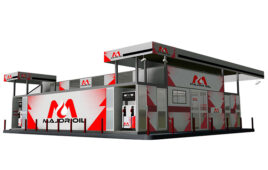Since December 2001, more than 20,000 new c-stores have opened in the U.S., bringing the total to almost 145,000 stores across the nation, Brandweek reported.
But in the midst of high gas prices and competition from groceries and mass merchandisers and a sour economy, it looks as if the c-store boom has quieted, as many chains now seek to scale back. Since the end of 2007, more than 1,400 c-stores have closed their doors.
Chain stores, such as 7-Eleven and BP, account for more than 52% of c-stores, while independently-owned stores make up the balance. Only 14% of c-stores are from chains with more than 500 stores, while the remainder are chain stores from local or regional companies, such as WaWa, Get Go and Nice N Easy.
Execution seems to be the deciding factor on whether or not a c-store can stand tall against the competition. “According to Nielsen research, consumers want convenience, obviously, but they also want a clean, organized store and the ability to check-out quickly,” Tom Pirovano, director of industry insights at Nielsen told Brandweek.
C-stores dominate a number of high-volume categories, such as tobacco (85% share of all channels), ice (57%) and beer (56%) and they outsell food, drug and mass merchandisers (including Walmart) combined in these categories. C-store sales of tobacco and beverages generate more than $90 billion annually.
A Nielsen survey found that customers want c-stores to offer gas, snacks and prepared food. “Stores that offer prepared food that looks fresh and smells good and cross merchandise those with other items are likely to hit a homerun,” noted Pirovano.
Today’s c-stores also are facing major challenges from rising credit card fees, and competition from small format groceries, to consumer desire for healthier foods and competition from club and mass retailers selling gas.
“The key to success is innovation. C-store retailers need to constantly fine-tune their offerings in the face of increased competition from other channels while never taking their eyes off the basics of cleanliness and efficiency,” said Pirovano.




